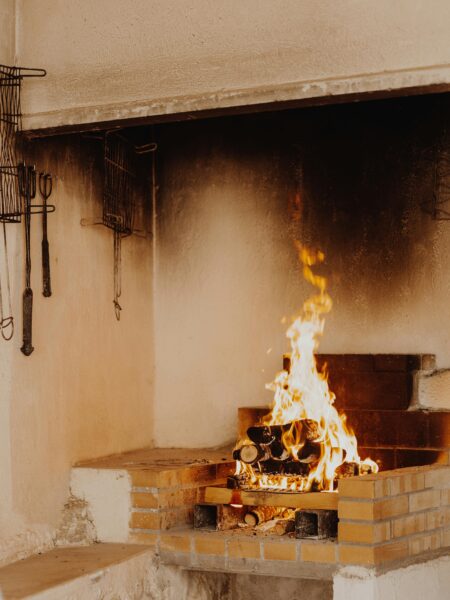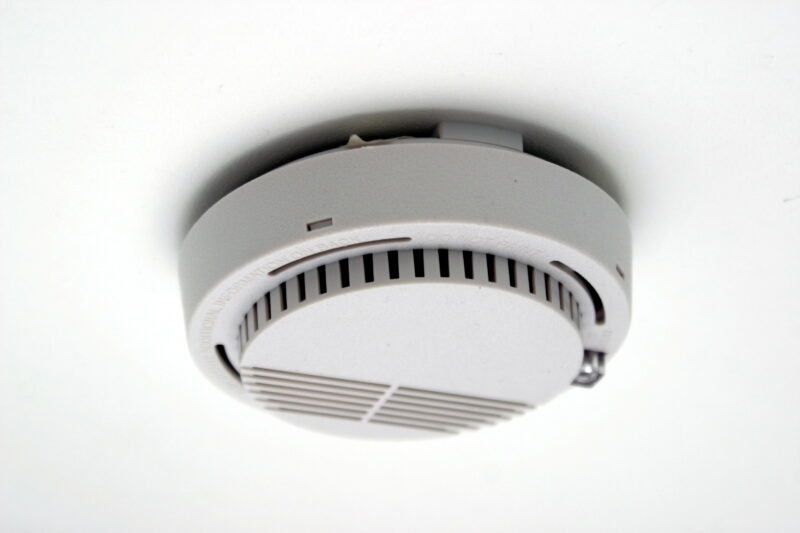
Ever been jolted awake in the middle of the night by your smoke detector’s piercing alarm, only to find there wasn’t a fire in sight? It’s a situation many homeowners can relate to—unexpected, inconvenient, and downright stressful. Let’s break down the reasons behind these mysterious false alarms and how to keep them in check.

Smoke detectors are designed to keep us safe, but they can occasionally be too sensitive. Here are the most frequent offenders when your alarm decides to go off without warning:
For more tips on maintaining your smoke detector, check out this comprehensive fire safety guide. Understanding these triggers is the first step to addressing the issue.

Your home’s environment plays a larger role than you might think. High humidity, heating systems, and even old homes with poor ventilation can exacerbate false alarms. For example:
Maintaining your home environment, as well as investing in affordable ways to safeguard your home, can help you minimize risks in the long run.
| Action | Why It Matters | Frequency |
|---|---|---|
| Clean the Detector | Prevents dust and debris from causing false alarms. | Every 6 months |
| Replace Batteries | Ensures consistent power and functionality. | Once a year or as needed |
| Test the Alarm | Checks that it's responsive in case of a fire. | Monthly |
Routine maintenance keeps your alarms in top shape and minimizes the nuisance of random beeping. Additionally, replacing an outdated device with modern options, such as the Kidde Hardwired Detector, can provide improved reliability and functionality.
Sometimes, the placement of a smoke detector might unintentionally invite false alarms. Here’s what you need to know:
If you're looking for a convenient, dual-detection alternative, consider exploring options like the Kidde Photoelectric Smoke & CO Detector for modern efficiency.
If false alarms are still driving you up the wall, it might be time to explore modern options. Smart smoke detectors offer several benefits:
One such option to consider is the Nest Protect Smoke and Carbon Monoxide Alarm, which provides peace of mind with its cutting-edge technology.
Have you experienced unexplained false alarms with your smoke detector? Share your stories or tips in the comments below—we’d love to hear how you tackled the issue!
Smoke alarms can go off unexpectedly due to various reasons such as the presence of dust, insects, or debris within the device. Electrical issues like faulty wiring or power surges may also trigger false alarms. Additionally, rapid temperature changes, common at night, can affect heat-sensitive smoke detectors, causing them to sound.
To prevent false alarms, regularly clean your smoke detectors to remove dust and debris. Ensure that the detectors are installed away from cooking areas and bathrooms where steam can set them off. Also, check for any loose or faulty wiring and replace batteries regularly.
If your smoke detector is chirping, it likely needs a battery replacement or indicates a low battery. It's important to replace the battery promptly to ensure proper functioning. If chirping continues after battery replacement, consult the user manual or contact the manufacturer for further advice.
Standard smoke detectors are not designed to detect carbon monoxide. To protect against carbon monoxide poisoning, it is essential to install carbon monoxide detectors in addition to smoke detectors, particularly in areas with fuel-burning appliances.
A power outage itself typically won't trigger a smoke alarm. However, power surges occurring when the power is restored might activate some alarms. It's advisable to use smoke detectors with battery backups to ensure they function continuously during power outages.
As we wrap up our deep dive into the unexpected world of smoke detector alarms, we hope you feel more equipped to handle any future midnight surprises. Don’t let these phantom alarms keep you on edge; instead, use these tips to ensure peace of mind. We love sharing more tips and hacks for home safety, and if you’re as passionate about this as we are, why not stay connected? Follow us and get inspired on Pinterest, catch behind-the-scenes moments on Instagram, join our conversations on X, and become part of our vibrant community on Facebook. We’d love to hear your own smoke detector stories and any solutions you’ve discovered, so don’t be a stranger!

Immerse yourself in architecture’s most boundary-pushing ideas—where innovative home improvements meet visionary urban developments. Discover new building techniques, materials, and creative concepts that are redefining how we shape our spaces on a global scale.